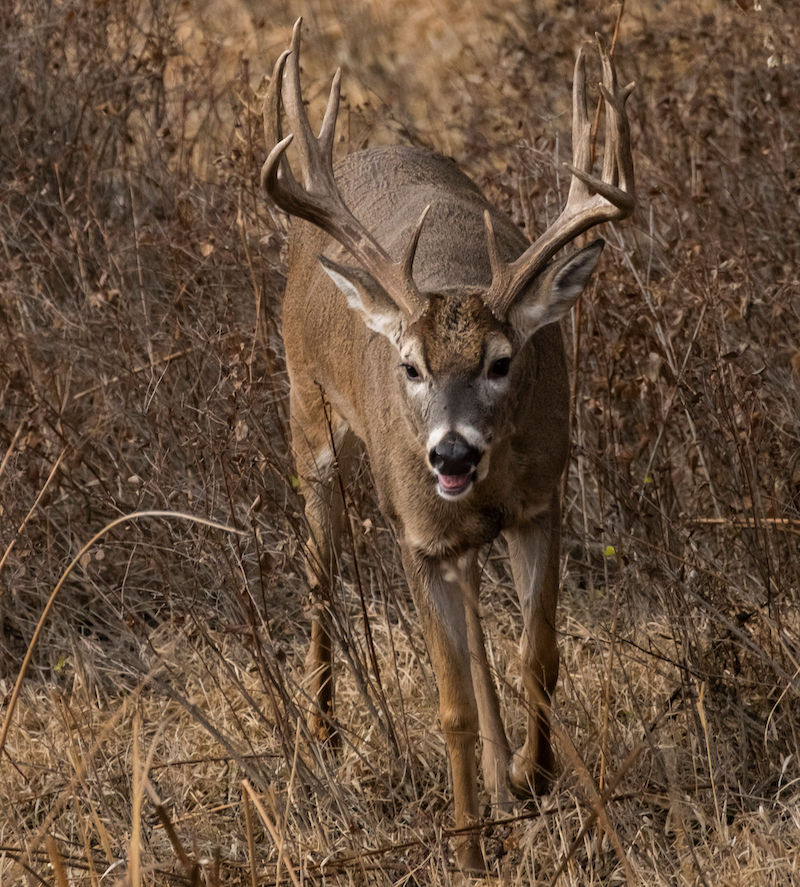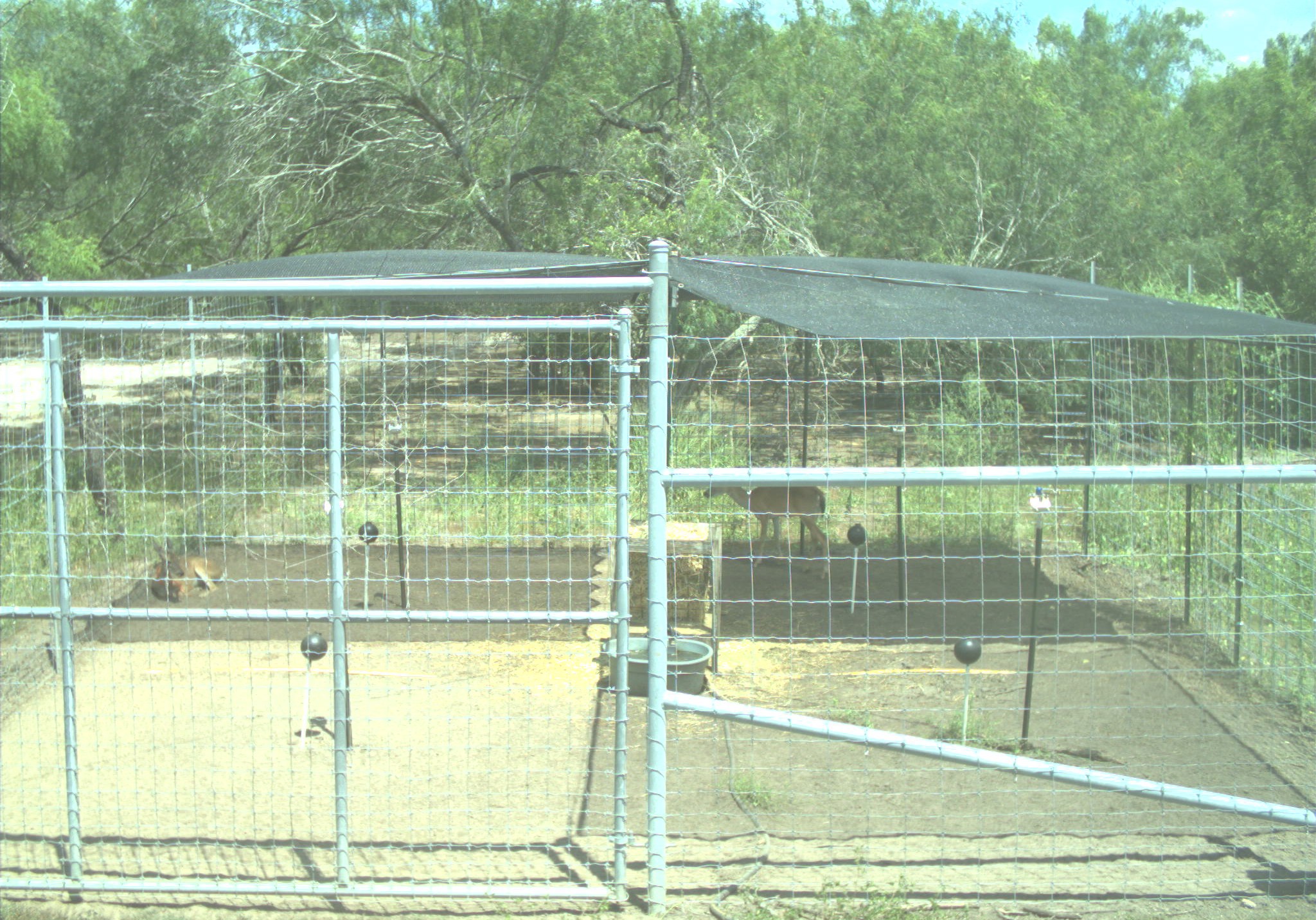Oh, glorious air conditioning. It’s your best friend on hot, humid summer days. Most Americans can escape to the AC when the mercury rises, but wild animals aren’t so lucky, and they can get just as stressed, tired, agitated and annoyed by the heat as we can.
So, how do deer respond to heat, and where do they go on hot days? And most importantly, what can bowhunters do to ensure they see deer if they decide to push through the sweat on an early-season sit? Let’s look at the science and hear what an avid bowhunter and deer researcher says.

Studies on how deer react to extreme heat were conducted at the Caesar Kleberg Wildlife Research Institute. Photo Credit: Austin Killam
Jacob Dykes, Ph.D., assistant professor and extension wildlife specialist at Texas A&M University, said there’s a lot of research on how extreme winter weather affects deer, but the effects of heat on deer are less understood.
In one study, he and several colleagues evaluated how whitetails handle heat stress. They conducted the research with the captive deer herd at the Caesar Kleberg Wildlife Research Institute in Kingsville, Texas, throughout August and September of 2020 and 2021.
They used different degrees of shade cloths (0%, 30%, 60% and 90% shade) and monitored which shade intensity deer selected as temperature fluctuated. Shade intensity didn’t seem to matter much until the temperature hit about 85 F. At that point, deer changed their behavior to actively seek out those areas with more shade.
“I don’t think the degree itself (85 F) is important,” Dykes said. “What matters is that there is a threshold where animals start making different decisions because they’re faced with the task of trying to mitigate heat stress. The actual temperature is relative.”

Deer in different geographical regions react to heat differently. Photo Credit: John Hafner
Relative, meaning that the temperature at which deer are affected by heat changes based on season, geographic location, where the deer is in its coat transition or breeding season, and what physical demands the animal is under at the time, such as rearing fawns, producing milk or growing antlers.
That’s why a Texas buck might not seem bothered by 90 degrees in July but is troubled by the same temperature in October when it’s sporting a winter coat. A deer in Wisconsin might react differently to 80 degrees than deer in Texas.
The team also looked at the difference between ambient temperature (the thermometer temperature) and operative temperature (the actual temperature when considering environmental factors like wind, air temperature, and direct or indirect sunlight or shade) to see if the environment affected deer behavior on hot days.
To understand the difference, where would you rather sit on a 90-degree day, under a tree canopy near a lake with a nice breeze hitting your face, or on a narrow blacktop road between two buildings?
The team realized shade isn’t created equally, and habitat plays a crucial role in the operative temperature. Additionally, to deter heat stress, deer manipulate their behavior before making physiological changes because it’s more energy efficient. Here are some changes you might see.
Behavioral Changes
Physiological Changes

Make sure deer have adequate habitat on your property. Photo Credit: Caesar Kleberg Wildlife Research Institute
The study findings could influence how land managers attempt to create more suitable habitats for deer trying to escape the heat, like creating nearby food and water sources, thinning thick areas with lots of undergrowth and creating multilevel successional forests. However, Dykes said hunters can use the information now to benefit their early-season hunting strategy.
“I’m a big bowhunter,” Dykes said. “Now that I understand (how deer handle the heat), I’m strategic about where I pick my hunting spots. If it’s cooler to you, it’s cooler to them. I seek ridges that get more airflow on hot days and avoid thick pine stands that feel like an oven. I wouldn’t hunt midday when animals are less active either.”
Dykes believes most hunters think bucks lie low in shaded, thick bedding cover during heat waves, but that’s not always the case. As you approach hot-weather bowhunts, consider things like airflow and the amount of shade in the area. Hunt areas that mitigate the stress of heat and you’ll likely see more deer. And, if you have time next summer, create a heat refuge for deer through habitat improvement projects.
Dykes’ research will be available in 2024.